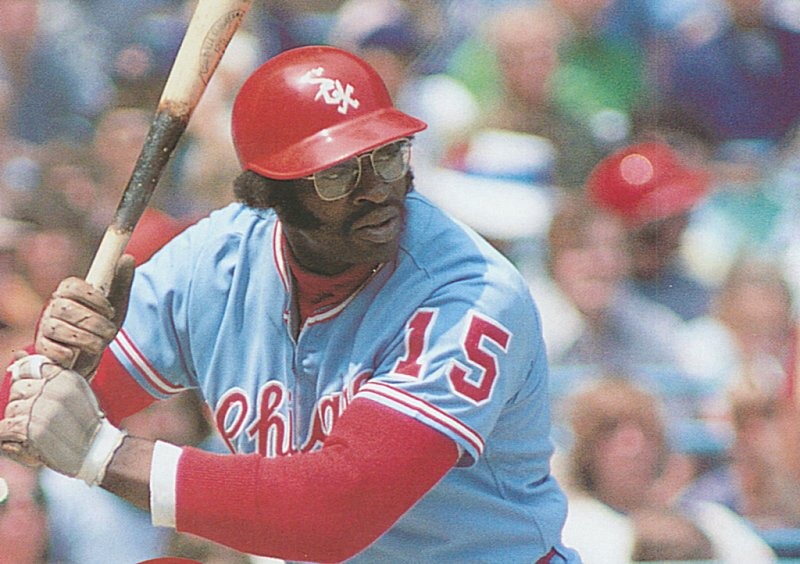 |
| Former Sox 1B Dick Allen will be honored at U.S. Cellular Field on June 24 to commemorate the 40th anniversary of his MVP Season. |
Dick Allen, winner of the 1972 AL MVP for the South Siders, will be honored on June 24 at U.S. Cellular Field, where he will recieve the opportunity to throw out the first pitch. The Sox also plan on wearing their 1972 throwbacks (basically the same uniform, except with red caps and pinstripes) for this game, and other members of the '72 squad will be there as well, along with the GM at the time, Roland Hemond.
This was one of the more crucial seasons in team history, as forgotten as it may be. People forget that the Sox of 40 years ago were living on borrowed time in Chicago. Speculation as to where the team could move was rampant, and since the product on the field was not all that great (only two years removed from losing 106 games), there was not a ton of public sentiment to keep them in town. Even the way you could follow the team outside of the park was incredibly difficult. They were relegated to broadcasting their games on WFLD-TV, which at the time was a UHF station that was incredibly difficult to pick up with your antenna. Richard Roeper, film critic and Sox fan, discussed this dilemma in his book "Sox and the City:"
"Nobody, and I mean nobody, had a crystal-clear picture on Channel 32. Sometimes the snow was so bad and the signal was so weak that you'd just give up and watch "Mary Tyler Moore" or "Bewitched"--or the Cubs." -Richard Roeper, from his book "Sox and The City"Further complicating matters was that no major radio station even bothered to pick up the Sox after their horrendous 1970 season, so they were relegated to two low-wattage AM outlets: WTAQ out of LaGrange and WEAW out of Evanston. As you can already guess, many areas around the Chicagoland region could not pick up the radio signal of either station (unless you lived in either LaGrange or Evanston). Meanwhile, the Cubs still had their games on crystal-clear WGN-TV and the 50,000 watt blowtorch WGN radio, thus attracting a new generation of fans simply because their games were more accessible.
It was in this situation where Dick Allen stepped in. Not by choice mind you, but by trade. On December 2, 1971, Sox GM Roland Hemond dealt infielder Steve Huntz and pitcher Tommy John to the Dodgers to acquire Allen, who was coming off of a 23 homer, 90 RBI season. He was already known as a great power hitter, as he already had four 30-plus home run seasons in his career. Neither he, nor the Sox knew that he was about to have one of the best offensive performances in team history.
Allen finished the 1972 season with a .308 average, 37 home runs, 113 RBI and an OPS of 1.023. He narrowly missed winning the Triple Crown, as he led the AL in homers and RBI, but finished third in the batting race behind Lou Piniella and Rod Carew. Nonetheless, his efforts helped vault the Sox into contention that year, shocking the American League when they went neck-and-neck with the Oakland Athletics. The Sox were even up on Oakland by a game and a half as late as August 26, before the "Swingin' A's" ultimately won the old AL West by 5.5 games.
Despite the near miss, Allen's season won over many people, and even more, got fans excited about White Sox baseball again. The Sox cracked the one million barrier in attendace for the first time in seven years, finishing third in the AL that season. Just two years earlier, the Sox were dead-last in the AL in attendance, drawing a paltry 495,355 fans for the entire 1970 season. Baseball was back on the South Side, and for the first time in years, they had a bonafide star.
For kids who grew up as Sox fans during this time, Allen seemed like a folk hero, more Paul Bunyan-esqe than a baseball player. Many of those who remember the Sox from this time will tell you about how he wore a helmet while playing first base (an unfortunate carry-over from his Philadelphia days when he had things hurled at him by abusive Phillies fans) and how he would draw messages in the dirt to the fans while at his position. They also remember how he swung a bat that was one of the heaviest in the majors, checking in between 40 and 44 ounces. They also remember his tape measure home runs such as the one he hit into the distant center-field bleachers against the Yankees in August of '72, as he was only the fourth player to accomplish the feat at the time. However, the thing that fans and even GM Roland Hemond remember the most about him was how much he meant to the overall health of the franchise. Hemond even remarked once that he was the "savior of the franchise." Lofty praise, but there is no denying that the Sox would likely not be in Chicago today if it wasn't for his memorable season that reinvigorated a dying franchise. It is fitting that 40 years later, Allen will be on hand for his day of honor on the South Side, along with the man that made it possible, Roland Hemond. I only wish I could be there.
No comments:
Post a Comment